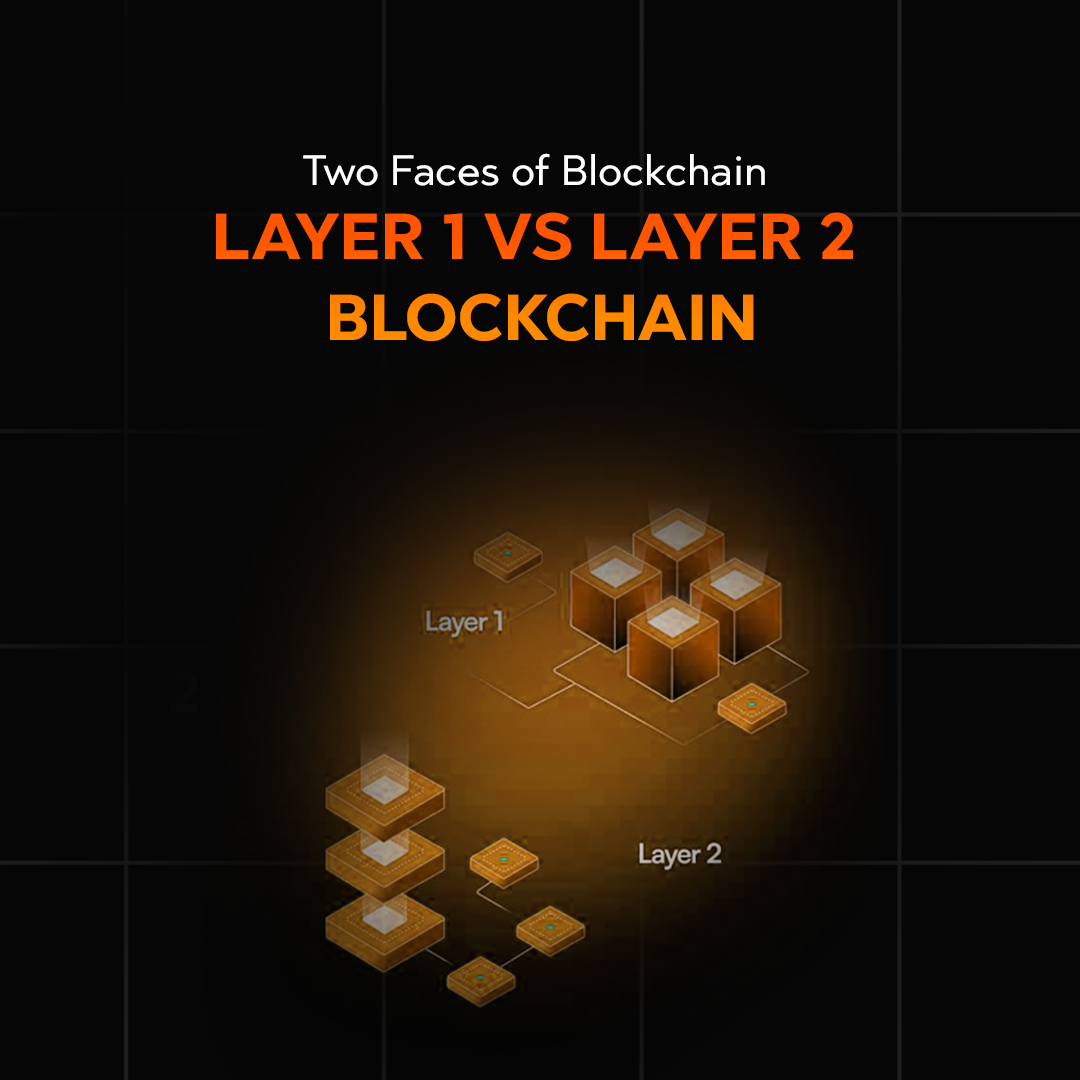
Two Faces of Blockchain | Layer 1 Vs Layer 2 Blockchain
Layer 1 Vs Layer 2 Blockchain
Embarking on the journey of understanding the intricate layers of blockchain technology, we encounter a fundamental challenge: scalability. This article is a comprehensive guide to the ever-evolving concepts of Layer 1 vs Layer 2 blockchains, unveiling their differences, exploring scalability solutions, and comparing consensus mechanisms. Let’s delve into the heart of the blockchain matter.
Scalability emerges as a critical puzzle piece for blockchain’s widespread adoption. As the demand for decentralized solutions intensifies, the need to overcome scalability challenges becomes increasingly urgent. Layer 1 vs Layer 2 blockchains represent two distinct strategies in addressing this challenge, each with its unique strengths and applications.
In this exploration, we will navigate the intricacies of these layers, revealing the strategies employed to unlock the full potential of blockchain technology in the modern digital era.
Scaling the Summit of Layer 1
Layer 1 Blockchain: Laying the Foundation
In the realm of blockchain architecture, Layer 1 is the bedrock, housing prominent networks like Bitcoin and Ethereum. These networks execute transactions and smart contracts directly on the blockchain, forming the basis for decentralized applications (DApps). However, the monumental rise in cryptocurrency popularity illuminated the limitations of Layer 1.
Issues Plaguing Layer 1
Transaction Speeds
Transaction speeds, or the lack thereof, represent a significant bottleneck within Layer 1 blockchain systems. The gradual processing times witnessed in these networks have become a focal point for users and developers alike.
As the blockchain ecosystem expands and user demands intensify, the efficiency of transaction processing becomes a critical determinant of the overall user experience. Users are increasingly seeking swift and seamless transactions, and the challenges faced by Layer 1 in meeting these expectations highlight the pressing need for innovative solutions.
High Fees
Layer 1 blockchain is grappling with the issue of soaring transaction fees. The escalating costs associated with transactions on these networks present a considerable barrier to widespread adoption and an impediment to providing a user-friendly experience.
As blockchain technology aims to reach broader audiences, the financial burden imposed by high fees becomes a significant concern. Users are seeking cost-effective solutions without compromising security and decentralization.
Layer 2 Blockchain: Rising to the Scalability Challenge
Layer 2 emerges as the solution to the scalability predicaments faced by Layer 1. Its primary goal is to amplify transaction speed, diminish costs, and enhance overall efficiency, all without compromising the fundamental tenets of security and decentralization inherent in blockchain technology.
Key Differences Between Layer 1 and Layer 2
- Transaction Processing:
-
- Layer 1 processes transactions directly on the main blockchain.
- Layer 2 conducts transactions off-chain or via sidechains.
- Scalability:
-
- Layer 1 scalability involves upgrading the blockchain’s base layer.
- Layer 2 achieves scalability by moving transactions off the main blockchain.
- Consensus Mechanisms:
-
- Layer 1 employs proof-of-work (PoW) or proof-of-stake (PoS) consensus.
- Layer 2 utilizes a variety of consensus mechanisms, including state channels and sidechain-specific protocols.
Blockchain Scalability Solutions
Sharding
Breaking down the blockchain into smaller shards for independent transaction processing. Sharding, a pioneering blockchain scalability solution, involves the strategic breakdown of the blockchain into smaller, manageable shards. Each shard operates independently, processing a subset of transactions, and collectively contributes to the overall efficiency of the network.
This innovative approach not only addresses the challenges posed by scalability but also enhances the potential for parallel transaction processing, significantly improving the overall throughput of the blockchain system. As we delve into the intricacies of scalability solutions, sharding emerges as a key architectural advancement, paving the way for a more streamlined and scalable blockchain future.
Optimistic Rollups
Optimistic Rollups, a compelling Layer 2 solution, takes a unique approach to scalability by processing transactions off-chain. In this innovative paradigm, transactions occur on secondary chains with increased speed and reduced costs.
The system then ‘rolls up’ a summarized version of these transactions to the main blockchain, ensuring a balance between efficiency and the security derived from the main blockchain’s consensus. This strategy not only optimizes transaction processing but also preserves the robust security features inherent in Layer 1, creating a harmonious integration of speed and reliability in the blockchain ecosystem.
Plasma
Plasma, another groundbreaking Layer 2 solution, propels scalability by leveraging side chains for independent transaction processing. These side chains operate autonomously, efficiently managing a subset of transactions before anchoring the results back to the main blockchain. This two-tiered architecture not only alleviates the burden on the main blockchain, enhancing overall scalability, but also introduces an additional layer of security and efficiency.
It becomes clear that this innovative solution is pivotal in shaping the future landscape of blockchain technology, offering a scalable and resilient framework for decentralized ecosystems.
Comparing Layer 1 and Layer 2 Consensus
- Layer 1 Consensus:
- Typically involves energy-intensive PoW or PoS for security.
- Contributes to scalability challenges.
- Layer 2 Consensus:
- Employs diverse consensus mechanisms prioritizing speed and efficiency.
Layer 1 Blockchain Protocols Giants
- Bitcoin (BTC):
- Pioneering decentralized peer-to-peer transactions securely.
- Ethereum (ETH):
- Leading smart contract platform aiming for Ethereum 2.0 scalability enhancements.
Balancing Layers for Crypto Advancement
Decoding the complexities of Layer 1 vs Layer 2 blockchain is imperative for navigating the evolving cryptocurrency landscape. While Layer 1 forms the robust foundation, Layer 2 introduces innovative solutions to scalability challenges.
As blockchain technology matures, the integration of Layer 1 and Layer 2 becomes paramount for a seamless, scalable, and user-friendly crypto experience. The future promises a blockchain ecosystem that not only upholds security and decentralization but also champions scalability and efficiency. It’s a symphony of technological advancement, and we’re only at the beginning of this blockchain journey.
